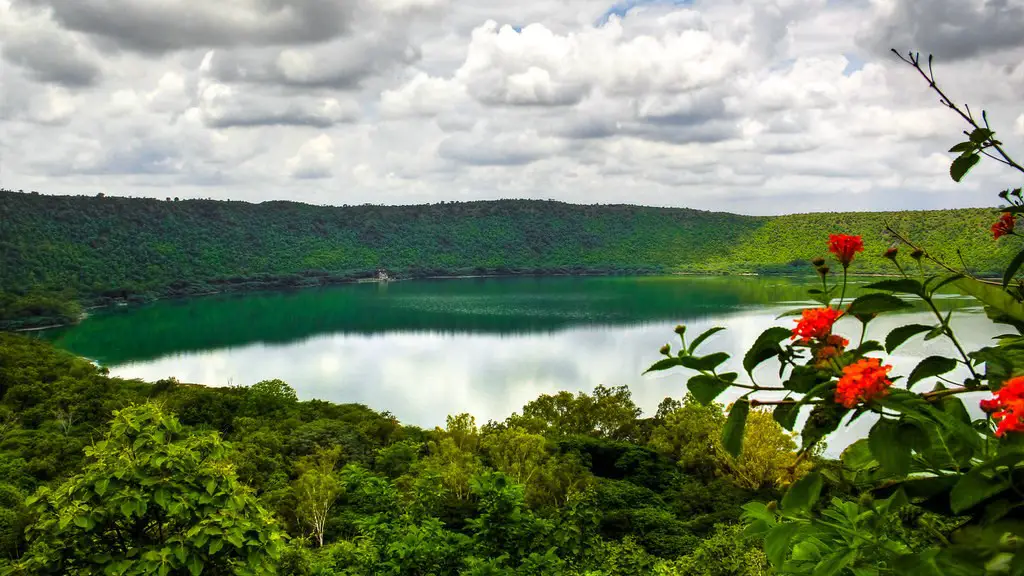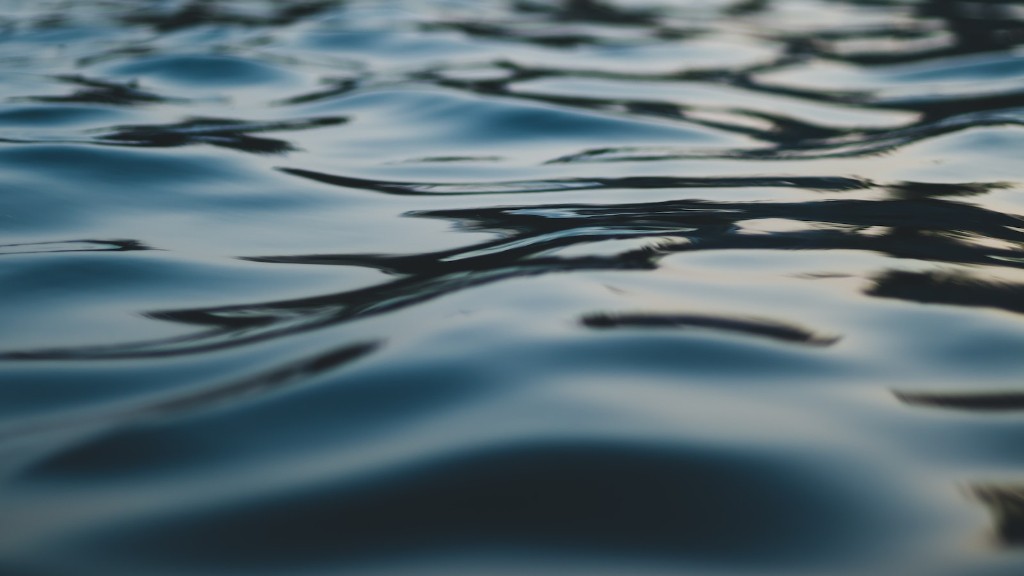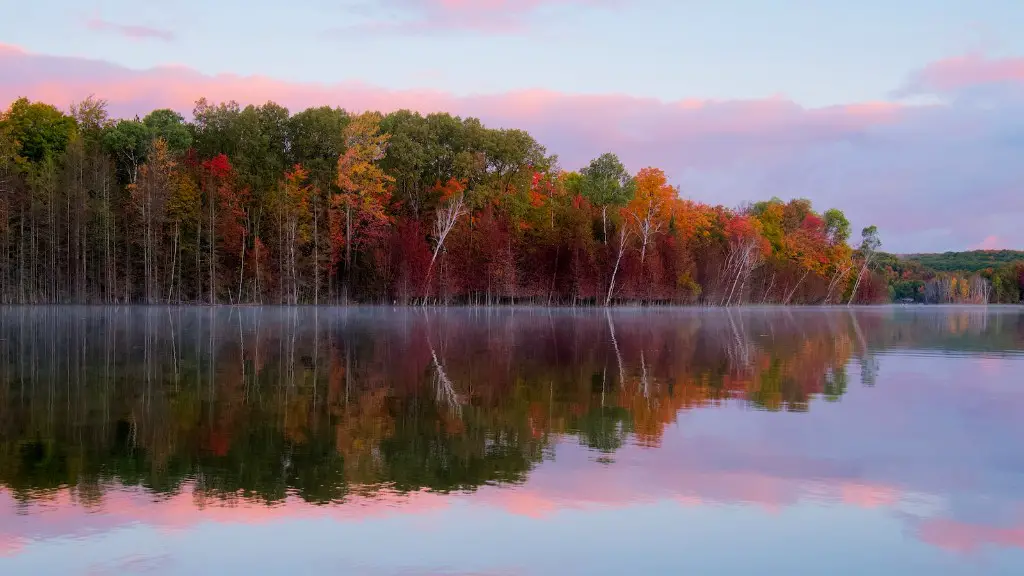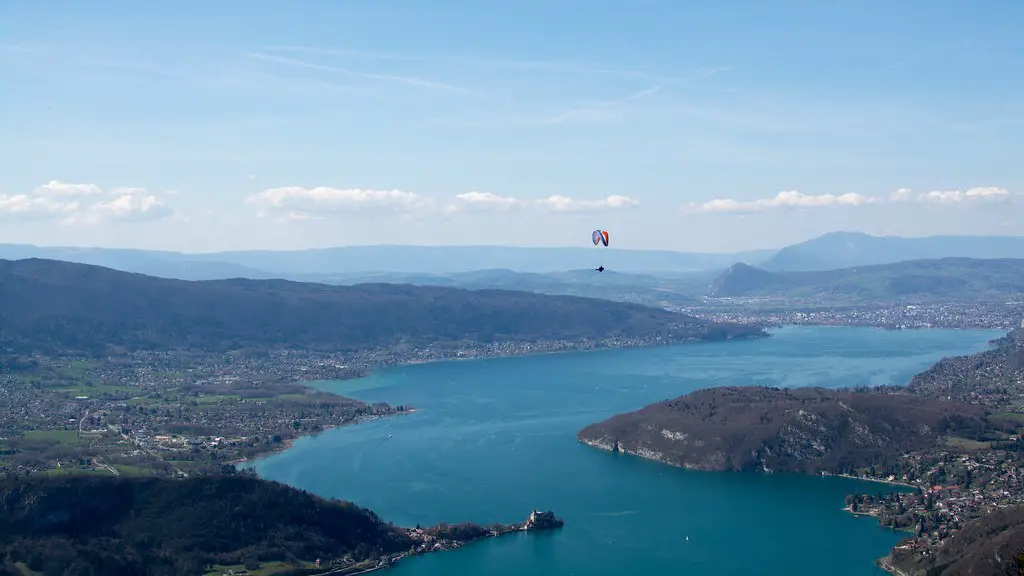How Big Is Lake Huron
Known as the world’s fifth-largest lake, Lake Huron remains a mystery to many. Its depth, expanse and beauty are matched by few other lakes in the world and yet many people are unaware of its immense physical size, the science behind it, and the impact that it has on our planet and its people.
To begin with, Lake Huron is vast. Spanning an impressive 59,596 sq. kilometers (23,000 sq. miles), it is second in size only to Lake Superior, the largest freshwater lake in North America. According to the United States Geological Survey, the lake covers a combined area of Michigan, Huron, and Georgian Bays and lies several hundred feet above sea level.
In terms of its depth, Lake Huron is the third deepest lake in the United States, with a maximum depth of 911 feet. It is also the second deepest of the Great Lakes, with only Lake Superior reaching greater depths at 1,332 feet. Due to its vastness and extraordinary depths, Lake Huron is home to an estimated 30,000 species of fish and wildlife, ranging from trout to smallmouth bass.
What makes Lake Huron even more impressive is that its waters span two separate countries. Divided by a narrow strait on the border between the United States and Canada, nearly half of Lake Huron’s surface area lies within the Canadian territory, making it a binational resource for both nations.
Additionally, Lake Huron’s abundance of fish, wildlife and biodiversity are an important resource for both countries. Local communities depend on the lake’s richness for subsistence and recreation, tourism, and commercial fishing. Its waters also provide irrigation for crops, much of which is beloved by residents in the Midwest and the Great Lakes region.
As the world’s fifth-largest lake, Lake Huron remains a stunning sight and provides a wealth of opportunity to both its local and global environment. It is a key part of the region’s ecosystem, ultimately supporting mankind’s growth and progress.
Impact of Increasing Industrial Activity
Despite its beauty and importance, Lake Huron is faced with several challenges due to unprecedented industrial activity. In recent years, the lake has faced increasing levels of agricultural and industrial runoff, sewage overflows, and pollution from the petroleum industry. As the lake’s shoreline stretches for 859 miles, the ever-increasing industrial presence continues to contaminate the lake and its ecosystems, at times drastically reducing its biodiversity.
Furthermore, given its expansive coastline, it is easier to spread pollutants across a wider area. As a result, native species of fish and other fauna have suffered greatly in recent years. In some cases, entire populations of fish and wildlife have been lost due to the effects of industrial runoff and pollution.
Beyond its impact on the environment, Lake Huron’s human inhabitants are also affected by such activities. For many, the lake serves an important source of employment, given its presence in the commercial fishing and recreational industries. If the lake’s water quality continues to decline, then these industries will suffer, along with thousands of local jobs.
At the same time, there is a greater likelihood that Lake Huron’s inhabitants will face more frequent illnesses due to its lowered water quality. In fact, a recent report from the Michigan Department of Natural Resources showed that high levels of contaminants in recent years have been linked to an increase in human illnesses.
For its future, Lake Huron must balance the need to protect its environment with the need to encourage economic growth. In recent years, local governments have implemented strict regulations on industrial activity and other forms of freshwater pollution to safeguard its future.
Preservation of Natural Habitats
In an effort to protect its ecosystem, local governments and organizations are continually looking to preserve the lake’s natural habitats. With a fragile and unique balance of water temperature, dissolved oxygen levels, and native fish and wildlife, the lake is a precious commodity and vital to ongoing environmental wellness.
To this end, protective measures have been enacted to limit activities such as overfishing and disturbance of native habitats. In particular, fishing for native species such as lake trout, lake sturgeon and lake whitefish is prohibited, as are activities that threaten their existence through destruction or unnecessary disturbance.
Additionally, measures have been taken to guard the lake from non-native introductions. The introduction of non-native species of wildlife can have a devastating effect on local wildlife, which is why there have been efforts to prevent the spread of invasive species through carp barriers and other isolation methods.
Along with its native habitats, Lake Huron’s wetlands and shallow coastal areas also deserve protection. These areas serve as important nurseries for fish, mussels and other species, allowing them to reproduce and find food in the lake’s shallow depths. As the lake’s size and depths continue to appreciably change, it remains vital that these shallow areas are maintained and valued for the care and provision of local fish and wildlife.
Climate Change’s Effect
In recent years, climate change has presented yet another challenge for Lake Huron and its inhabitants. As temperatures continue to rise, the lake’s levels are more likely to be affected. In particular, drastic weather events such as heavy rains and storms can flood low-lying areas along the lake’s shoreline, leading to property damage and the displacement of people and animals in the area.
At the same time, rising temperatures can significantly reduce native wildlife populations. For example, scientific studies show that increased temperatures cause greater evaporation of surface water, which in turn can significantly reduce oxygen levels in the lake. Low oxygen levels make it harder for fish and other animals to survive, leading to population declines.
In its effort to address such changes, the Great Lakes Commission has outlined a framework of policies and regulations to help preserve the lake’s current state. Encouraging climate-friendly initiatives such as limiting greenhouse gas emissions and encouraging responsible land use will help reduce the impact of climate change and thereby further secure the lake’s future.
Drainage System
The natural drainage system of Lake Huron is a complex network of rivers, creeks, and streams that runs from the northern tip of Lake Huron all the way to the northern reaches of Lake Michigan. The system is part of the Great Lakes-St. Lawrence River Basin, a connected Group of Lakes and rivers that spans 8 US states and 2 Canadian provinces.
The drainage waterways of Lake Huron are highly diverse, spanning everything from the St. Clair River to the North Channel of Georgian Bay. Each of the lake’s points of connection is a vital piece of the interconnected chain, providing essential ecological roles, such as providing nutrient-rich freshwater to Lake Huron and dispersing fish and other wildlife.
In turn, the lake drains into the Huron River, located in the southern tip of Lake Huron in Michigan. The river is the lake’s primary outlet before it empties into Lake Erie and the Niagara River, ultimately draining into the Atlantic Ocean.
For Lake Huron, the drainage system serves several purposes. It helps to maintain the lake’s water levels, as well as providing essential nutrients and a way for fish, wildlife, and aquatic plants to spread throughout the region. Overall, the system is an integral and irreplaceable part of the lake’s ecosystem.
Water Quality
The water quality of Lake Huron is an important indicator of its health and existence. With significant levels of industrial runoff, sewage overflows and oils spills polluting its waters in recent years, it is clear that the lake’s health is vulnerable.
The United States Environmental Protection Agency (EPA) provides an annual report on the state of the nation’s freshwater bodies, specifically highlighting the condition of Lake Huron. The report states that, although the lake is a high quality body of water, there is still cause for concern, given its high concentration of pollutants.
In terms of the lake’s water temperature, it ranges from 39°F (4°C) in the winter to approximately 68°F (20°C) during the summer months. Over time, the lake’s average temperature has been increasing, an indicator of climate change-induced warming trends that have affected the lake’s environment.
In terms of its water’s pH, which measures its acidity, the lake’s normal range is typically between 7.2 and 8.2. This means that the lake can be classified as neutral to slightly alkaline, making it suitable for aquatic life.
Overall, Lake Huron faces multiple threats that might affect its long-term health. Despite such challenges, local organizations and governments are continually striving to protect the lake’s environment and preserve its current state.
Conclusion
As the world’s fifth-largest lake, Lake Huron possesses immense physical size, remarkable depths and an abundance of fish and wildlife. Moreover, the lake’s waters span two separate countries, making it a binational resource of immense value. Unfortunately, Lake Huron’s environment is increasingly facing threats from industry and climate change. Thus, it remains vital that its habitats are preserved and its water quality is improved to ensure its ongoing health and environmental sustainability.





